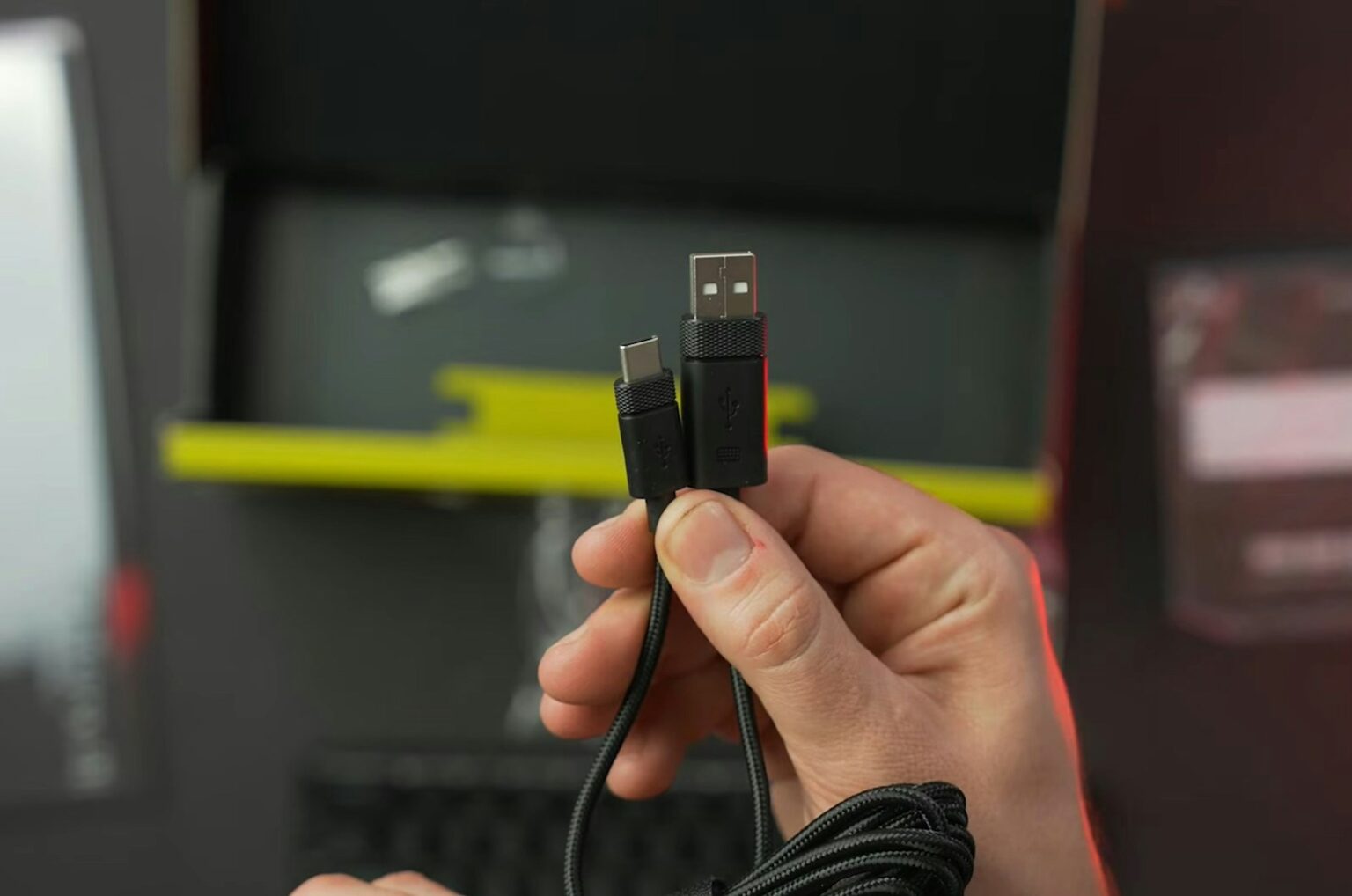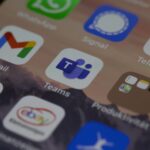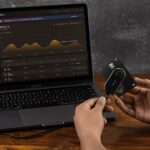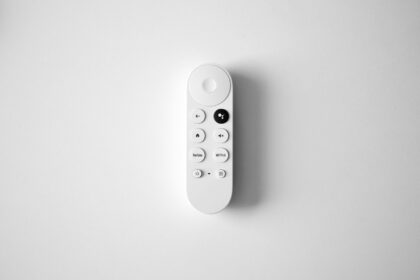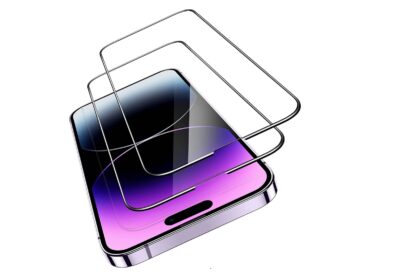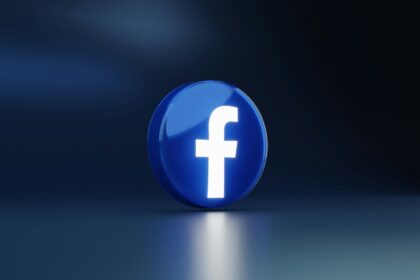USB On-The-Go lets an Android phone or tablet act as a host so you can plug in peripherals and storage. With a simple adapter, your smartphone can read flash drives, accept keyboards and mice, and even run wired internet via USB-to-Ethernet.
Many modern android devices enable OTG by default; others need a quick toggle in Settings > Additional Settings > OTG. Most external drives work best with FAT32 or exFAT, and larger gear often needs its own power source.
This short guide shows what usb otg is, how to set it up on your phone, and which adapters and formats work best. Expect practical ideas for media playback, gaming controllers, DSLR control, USB microphones, and simple power tricks like reverse charging.
Tip: check compatibility with a USB OTG Checker app and avoid unpowered hubs for power-hungry devices. Read on for clear, hands-on uses and safe connect/disconnect steps.
Why USB OTG Matters Right Now
Making a smartphone the host device brings desktop accessories straight to your pocket. That host role lets a phone accept flash drives, keyboards, mice, cameras, microphones, Ethernet adapters, and controllers.
For work and play, this feature turns small devices into capable mini-computers. Type with a physical keyboard, point with a mouse, or enjoy a game controller for better play in compatible titles.
Creators and casual users both gain real value. Plug in a mic for cleaner audio. Import photos from a camera and edit immediately. Connect a drive for fast file transfers and local media playback when Wi‑Fi fails.
- Many smartphones support this by default; others only need a quick settings toggle.
- Remember the phone supplies power as host; high-draw usb devices may need external power.
- Because it uses standard usb devices, you can reuse gear and cut e‑waste.
In short: the functionality stretches device life and fills gaps between mobile convenience and desktop accessories, making it a timely addition to everyday tech.
Check USB OTG Support on Your Android Device
Not every handset supports host mode, so a quick check can save time and money. Use a few fast checks to confirm whether your phone will accept external peripherals and storage before you shop for adapters.
Quick checks: Start by reading the original box or the manufacturer specs for a “usb otg” mention or logo. Many makers list this in the tech sheet, and Samsung phones often have the host role enabled by default.
Look in system settings and try an app
Open Settings and search for “OTG” — some brands hide the toggle under Additional Settings and it can time out after inactivity. If a toggle exists, enable it and plug a known-good cable to refresh the host session.
- Install a free USB OTG Checker app to confirm hardware and software features and see which peripherals your android device supports.
- If a device fails to appear, switch USB connection mode if available, then unplug and replug after enabling OTG.
- Try a different adapter or remove a blocking case; poor fit or a bad cable often mimics incompatibility.
Older phones may lack support or need extra power for some devices. Checking first helps you know which devices will work and which may require powered hubs or alternate setups.
What You Need: OTG Cables, Adapters, and Compatible Devices
A small kit of adapters, cables, and tested drives saves time and prevents surprise failures. Start with an adapter that matches your phone’s port and supports host mode. For example, a Syntech USB‑C to USB adapter works for many modern phones and lets you plug standard peripherals directly into your smartphone.
Choosing the right connector
Pick a USB‑C or micro‑USB otg adapter that advertises host support. A quality otg cable cuts random disconnects and keeps speed steady for data transfers.
Storage formats and power
Format flash drives as FAT32 or exFAT for best compatibility; NTFS is often read‑only. Bus‑powered portable HDDs can draw too much current, so prefer SSDs or drives with their own power supply.
Hubs, cameras, and combo use
Many USB hubs are hit‑or‑miss over OTG, so plug essential usb devices directly when possible. For digital cameras and camera control, use the manufacturer data cable and set the camera to file transfer or remote mode.
- Consider dual USB‑A/USB‑C flash drives for easy file shuttling.
- Short, well‑shielded cables improve speed and reduce errors.
- Keep a compact adapter in your bag and a longer cable at your desk for flexible setups.
Tip: test new gear briefly on your android device before relying on it in the field — that saves time and keeps your setup working with usb otg.
10 Cool Ways to Use USB OTG on Android
With the right OTG adapter you can link a phone to common peripherals and get real work or play benefits. Use OTG for quick transfers, better input, improved audio, and wired networking without a computer.
Plug in a flash drive or external drive
Attach a usb flash drive via an otg adapter to copy files or stream media without filling internal storage. Use FAT32 or exFAT for best compatibility with portable SSDs and powered HDDs.
Connect game controllers
Level up mobile play by hooking up Xbox or PlayStation controllers. Many titles map buttons natively for tighter input and a console feel.
Use a keyboard and mouse
Attach a usb keyboard and a mouse to speed through email, docs, and web browsing. This setup turns your handset into a compact productivity station for short tasks.
Print and control cameras
Print directly with supported Canon, Epson, or HP models when USB works better than wireless. Control DSLRs using apps like Helicon Remote or Camera Connect and Control for live view, focus, and shutter control.
Import photos from digital cameras
Move RAW and JPEG files straight from cameras to your phone for fast editing and backup. A camera cable plus the right app saves time when Wi‑Fi is unavailable.
Make music and record audio
Play MIDI keyboards into synth apps or record with a USB microphone using tools like USB Audio Recorder Pro. Small controllers often draw power from the phone; check limits first.
Wired internet and reverse charging
Use a USB‑to‑Ethernet adapter such as QGeeM for low‑latency connections. You can also reverse-charge another phone via an otg adapter in a pinch.
- Pro tip: test devices briefly and carry a compact otg adapter for on‑the‑go flexibility.
Set Up USB OTG the Right Way
Start clean: enable usb otg in Settings before you plug anything in. On some phones the option sits under Settings > Additional Settings > OTG and may turn off after idle periods. Turning it on first forces the host role and avoids missed connections.
Choose a sturdy usb otg cable or compact adapter that lists host support. Cheap cables cause dropouts and can stop data transfer. Use correct data cables for cameras, audio gear, or storage to prevent errors.
Connect one accessory at a time during first setup. This helps isolate issues and confirms each device works. For a keyboard and mouse, a single wireless receiver is handy when you have just one port; otherwise plug items in one by one.
- Keep cables short to reduce voltage drop; power-hungry drives or interfaces may need external power.
- If a device isn’t recognized, unplug, wait a few seconds, then reconnect after otg is enabled so the phone reinitializes host mode.
- Always eject storage from the notifications panel before removing it to avoid file corruption.
- Update related apps (printing, camera control, audio recorder) for the latest device support and stability.
External Storage With OTG: Formats, Speed, and Playback Tips
External drives make your phone a portable media hub when connected properly. When storage is connected via an OTG cable, many files appear instantly in your file manager. Use a quality cable and plug drives directly; hubs often cause missed mounts.
Format drives as FAT32 or exFAT for the broadest compatibility. A single flash drive will usually mount immediately and let you browse or stream media without copying.
- Expect faster transfers with SSDs and well‑made flash drives; older HDDs can feel slow when opening large videos.
- If a portable HDD fails to mount, it likely draws too much power—switch to a self‑powered enclosure or a lower‑draw SSD.
- Use a strong media player app for better codec support and smoother seeking when you play files directly.
Keep filenames simple and organize photos into folders so your phone can index thumbnails faster. Always eject storage before unplugging to avoid corruption. If your android smartphone heats up during long copies, pause and let it cool; sustained writes raise temps and can slow device performance.
Controllers, Keyboards, and Mice: Plug-and-Play Input on Android
Plugging a physical gamepad or mouse into your phone can turn casual play into a focused session with better aim and control.
Many controllers work out of the box on Android 9 and later. Xbox One pads are supported, and older wired game controllers like Xbox 360 models often run via an otg adapter. That means fast, low-latency input for shooters and racing titles.
A usb keyboard and a mouse make short work of email and documents. Most wired and 2.4 GHz wireless combos with a single receiver work without drivers. Bluetooth is a good alternative if you want to save the port.
- Map buttons in supported games and adjust sensitivity so the feel matches the smaller screen.
- If key labels don’t match your layout, install a keyboard app that offers custom mappings.
- Avoid peripherals that need desktop drivers—your smartphone can’t run those installers.
- Watch power draw: backlit keyboards and high-polling mice may need more current than your phone can supply.
When you finish, unplug accessories in reverse order to avoid stray inputs as the host session ends. This simple setup turns your mobile device into a compact gaming and productivity station with familiar input hardware.
Cameras and Photo Workflow: From DSLR Control to Instant Transfers
Skip the laptop: connect a camera directly to your phone for live view, quick edits, and backups.
Use an otg adapter and your camera’s data cable to link most digital cameras. If the camera supports PTP or MTP, the android device can browse folders and import photos fast.
For remote shooting, apps like Helicon Remote and Camera Connect and Control give live view, focus, and shutter control for many Canon and Nikon models. That live feed makes composing and checking focus simple.
- Quickly cull and back up selects on the spot so you leave the shoot with edits and copies already saved.
- If transfers fail, switch the camera’s USB mode, reconnect the cable, and try again.
- Keep cables tidy around tripods to avoid snagging and accidental disconnections while moving.
Large RAW files transfer faster with good cables and fast cards; plan time for big shoots. When finished, eject storage on the phone and power down the camera before unplugging to protect ports and files.
Audio Power-Ups: MIDI Instruments and USB Microphones
A lightweight controller plus the right apps turns a phone into a pocket studio for quick song drafts. Plug a compact MIDI keyboard into an otg adapter and sketch melodies in GarageBand alternatives or mobile DAWs. Many small controllers draw minimal power from the phone, so you can play anywhere.
For larger rigs, add external power or a powered hub so the device stays stable during long sessions. That avoids brownouts and dropped notes when synths or multi‑zone pads pull current.
USB microphones give far cleaner results than built‑in mics. Use apps like USB Audio Recorder Pro to set sample rate, stereo channels, and buffer size for low‑latency monitoring and reliable captures.
- Plug in a MIDI keyboard to sketch beats; most compact controllers run from the phone.
- Provide external power for bigger interfaces and avoid performance issues.
- Record audio with a USB mic for podcasts, voiceovers, and music demos.
- If a mic isn’t detected, try a different cable and reconnect after enabling usb otg so the device initializes properly.
- Keep the phone on a stand, enable airplane mode, monitor levels, and back up raw files to a drive or cloud.
Networking and Power: Ethernet Adapters and Reverse Charging
A simple adapter can turn your handset into a wired network client or a mobile power donor in a pinch.
For rock‑solid internet, plug a USB‑to‑Ethernet dongle (for example, a QGeeM USB‑C model) into an otg cable, then attach your LAN cable. This gives steadier speeds and lower latency for cloud gaming, streaming, or big downloads.
Not every phone supports Ethernet over OTG. Test with a known‑good adapter and look for link lights or a network indicator on the smartphone. If the adapter does not appear, enable OTG, reconnect, and wait a few seconds for DHCP to assign an IP.
To reverse charge, plug the OTG side into the source phone, then join the second phone with a standard USB cable. The source phone acts as the host and donates power. Expect modest rates—this is for short top‑ups, not full refueling.
- Tip: use quality adapters that enumerate correctly with the phone’s host stack.
- Keep cables strain‑relieved so ports don’t get stressed while transferring power or data.
- If you rely on wired net, test the setup before live events and carry a spare adapter for controllers or storage.
Troubleshooting OTG: Permissions, Power, and Settings
Troubleshooting begins with power and permissions—simple steps solve most connection problems. First, confirm the proper settings are enabled (some models hide the option under Settings > Additional Settings > OTG). Enable it, then unplug and replug the accessory so the phone reenters host mode.
Test with a known-good flash drive or simple gadget to isolate whether the issue is the accessory or the cable. Swap adapters and cables—many failures come from charge-only leads or poor connectors.
Some external drives need extra power or specific formats. Check that the filesystem is FAT32 or exFAT, and consider a self-powered enclosure for high-draw storage devices.
- Avoid chaining through hubs; connect one device at a time to reduce enumeration errors on smartphones.
- Install or update the right app for the job—audio recorders for USB mics and camera control apps for DSLR links.
- Restart the phone after changing permissions or toggling OTG to clear stale host sessions.
- If problems persist, try the accessory on another device to verify its functionality and narrow down the fault.
Safety and Best Practices for USB OTG on Smartphones
A few safe routines keep data intact and ports healthy when you connect gear. Treat this feature as a temporary host session and avoid leaving peripherals attached longer than needed.
Start with quality parts: use a trusted usb otg cable and a proven adapter brand. Cheap leads cause erratic mounts and can wear the port faster.
Always eject external storage before unplugging to protect files and extend drive life. Prefer exFAT or FAT32 for broad compatibility so you can use usb otg media across devices.
Mind power draw. If a device or drive needs more current, add external power rather than forcing the phone to supply it. Many hubs fail as a bridge; avoid unpowered hubs for demanding gear.
- Keep cables short and avoid tight bends to protect the connector.
- Enable OTG only when you plan to use otg, then unplug accessories afterward to save battery.
- Gently clean ports and store adapters in a case to prevent debris-related faults.
- Don’t insert unknown USB sticks—treat them like untrusted media and scan on a computer first.
On android phones, simple care extends the port’s usable life and keeps peripherals working reliably. When in doubt, test an accessory on another device before relying on it in the field.
Conclusion
A small adapter can turn a phone into a practical workstation for photos, audio, and gaming. Use an OTG adapter to read drives, connect controllers, plug in microphones, or attach a keyboard and mouse. These simple setups make an android smartphone much more capable for quick edits and on-the-go tasks.
For smooth results, enable OTG in settings when required, format drives as FAT32 or exFAT, and give power-hungry devices their own supply. Avoid unpowered hubs and always eject storage before unplugging to protect files and ports.
Keep a compact adapter in your bag so your smartphone can handle wired internet, camera imports, and better input whenever needed. With a bit of practice, these small steps let you use usb otg setups naturally and get more from the phone you carry every day.
FAQ
How do I check if my Android phone supports OTG?
Look up your model on the manufacturer’s website or check the original box and specs for “USB host” or “OTG” support. You can also install a trusted OTG checker app from Google Play for a quick confirmation.
Which adapter do I need: USB-C or micro-USB?
Match the adapter to your phone’s port. Newer phones use USB-C while older models use micro-USB. Choose an adapter that explicitly states USB host support and, when possible, pick a branded cable from Samsung, Google, Anker, or Belkin.
Can I use a USB flash drive formatted as exFAT or NTFS?
Many modern Android builds support exFAT natively, but NTFS may need a third-party app or rooted access. FAT32 works universally but has a 4GB file-size limit. Check your phone’s storage settings and test with a short transfer.
Will my phone power an external hard drive or hub?
Portable USB flash drives usually work without extra power. Spinning hard drives and some hubs often require external power or a powered hub. If a device draws more current than your phone can supply, it won’t mount reliably.
How do I transfer photos from a DSLR to my smartphone using an adapter?
Use a compatible OTG cable to connect the camera via USB. Set the camera to the correct transfer mode (PTP or Mass Storage), then use the Photos or Files app on Android to import images directly.
Can I use a USB keyboard, mouse, or game controller with Android?
Yes. Most wired keyboards and mice are plug-and-play. Popular controllers like Xbox and PlayStation gamepads often work either wired or via supported adapters. Check game or app compatibility for controller mapping.
How do I record higher-quality audio with an OTG microphone?
Connect a compatible USB microphone or audio interface via OTG. Use a recording app that supports USB audio input (like WaveEditor or USB Audio Recorder PRO) and choose the USB device as the input source in app settings.
Can OTG provide a wired internet connection through Ethernet?
Yes—use a USB-to-Ethernet adapter that’s supported by Android. Plug the adapter through an OTG cable; Android should detect the wired connection. Some phones may need additional driver support or an app.
Is it possible to charge another phone using OTG?
Many phones support reverse charging over OTG, letting your device act as a power bank for another smartphone or accessory. Enable USB power delivery in settings if available, and monitor heat and battery drain while doing this.
What should I do if my device doesn’t recognize an OTG accessory?
Check that your phone supports OTG, try a different OTG cable or adapter, and test the accessory on another device. Ensure the accessory’s power demands are within your phone’s limits and grant any required permissions in Android’s Files or USB settings.
Do hubs with multiple devices usually work with Android?
Simple passive hubs often work for low-power devices like flash drives, keyboards, and mice. For multiple power-hungry peripherals, use a powered USB hub to ensure stable performance and proper recognition.
Are there safety concerns when using OTG with smartphones?
Yes. Use quality adapters and avoid cheap cables that can short or overheat. Unmount drives safely before unplugging, and don’t use OTG while the phone is charging from unknown sources. Keep firmware and security patches up to date.
Which file manager apps help with OTG transfers and playback?
Solid Explorer, Files by Google, and Total Commander are popular choices. They let you browse attached drives, copy media, and stream or open files directly from external storage with minimal fuss.
Can I control my DSLR from an Android phone using OTG for live view and shutter release?
Many camera makers provide apps (like Canon Camera Connect or Sony Imaging Edge) that support USB control. Third-party apps such as DSLR Controller also work with certain models. Check compatibility and cable requirements before connecting.
Will MIDI keyboards work through OTG with music apps?
Yes. Most USB MIDI controllers are recognized by Android music apps like FL Studio Mobile, Caustic, or BandLab. Choose an app with MIDI support and set the USB device as the MIDI input in the app’s settings.


